Disclaimer: This blog post contains affiliate links. If you make a purchase through these links, I may earn a small commission at no additional cost to you. Learn More. Thank you for supporting our garden community.
Companion Planting is Overrated. Do This Instead
You’ve seen all the charts. You’ve read all the books. “Don’t plant onions near beans!” “Put basil next to tomatoes!” “Carrots love tomatoes!” It’s an uplifting idea that certain plants are best friends and others are mortal enemies. But let me ask you something: Have you ever actually seen companion planting play out in real life?
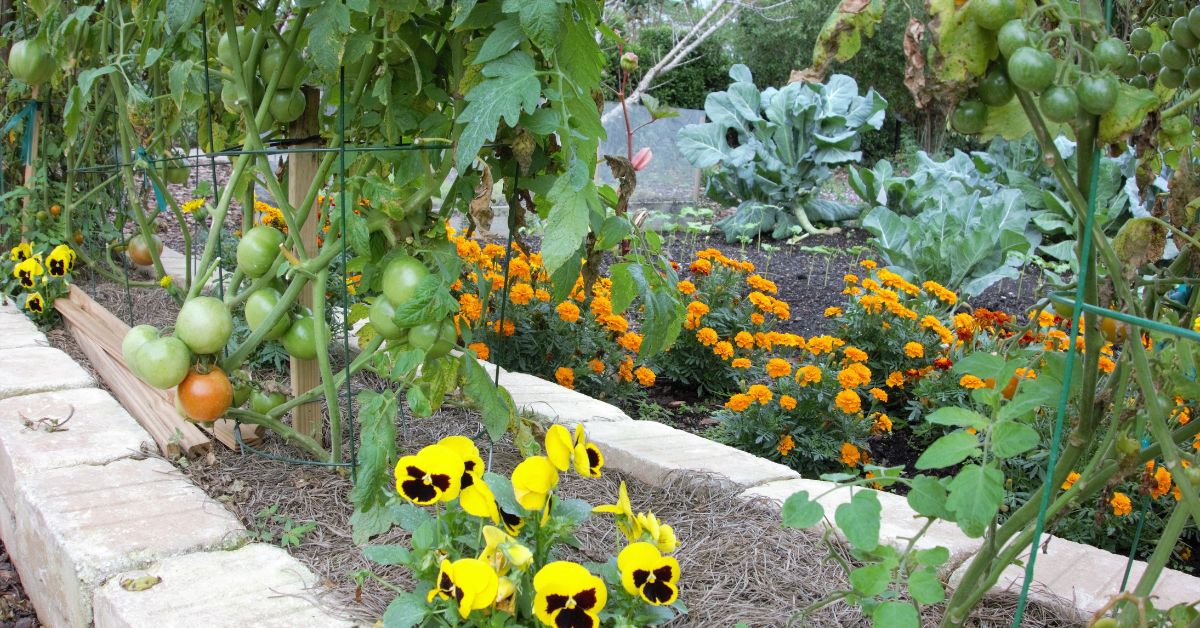
Companion Planting Doesn’t Matter
The answer is no, you haven’t seen it play out in real life. Neither have I.
Because here’s the truth that nobody says out loud: Companion planting doesn’t really matter. It just doesn’t. Sorry.
If you’re in a small backyard vegetable garden trying to grow some food, you don’t need a list of plant best friends. You just don’t.
It sounds nice in theory, but I’m going to show you why companion planting just doesn’t matter.
Products:
Save 10% on your first Burpee seed order using code BURPEE10
What is Companion Planting?
Companion planting is the idea that planting multiple different crops together will somehow benefit one of the crops or both at the same time.
Basically if you plant multiple different crops together, at least one of them will be benefited. Sounds simple, but it also sounds like nonsense.
They give all sorts of benefits. It’ll reduce pests, attract pollinators, improve the flavour of a crop, or something else.
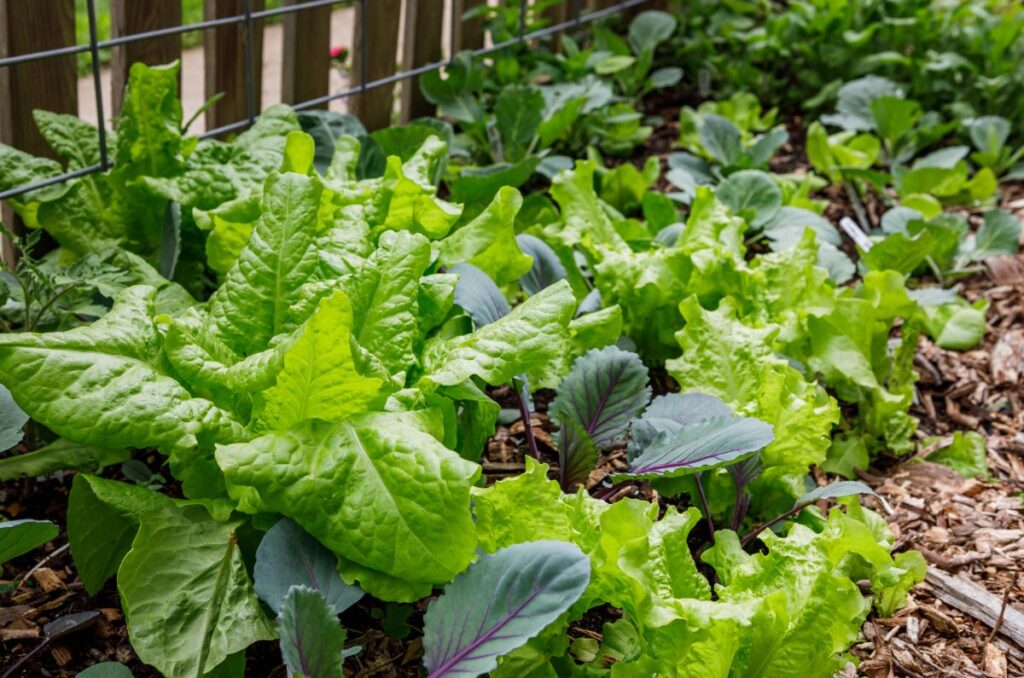
Companion Planting vs. Interplanting
Interplanting is the practice of growing crops together in empty spaces to save garden space. It’s used just for the purpose of maximizing space in your vegetable garden.
It doesn’t give a direct benefit to a specific crop, like with companion planting.
Therefore, companion planting doesn’t include interplanting.
It also doesn’t include cover cropping because the plants aren’t actually growing together. You grow the cover crop, terminate it, then plant your vegetables.
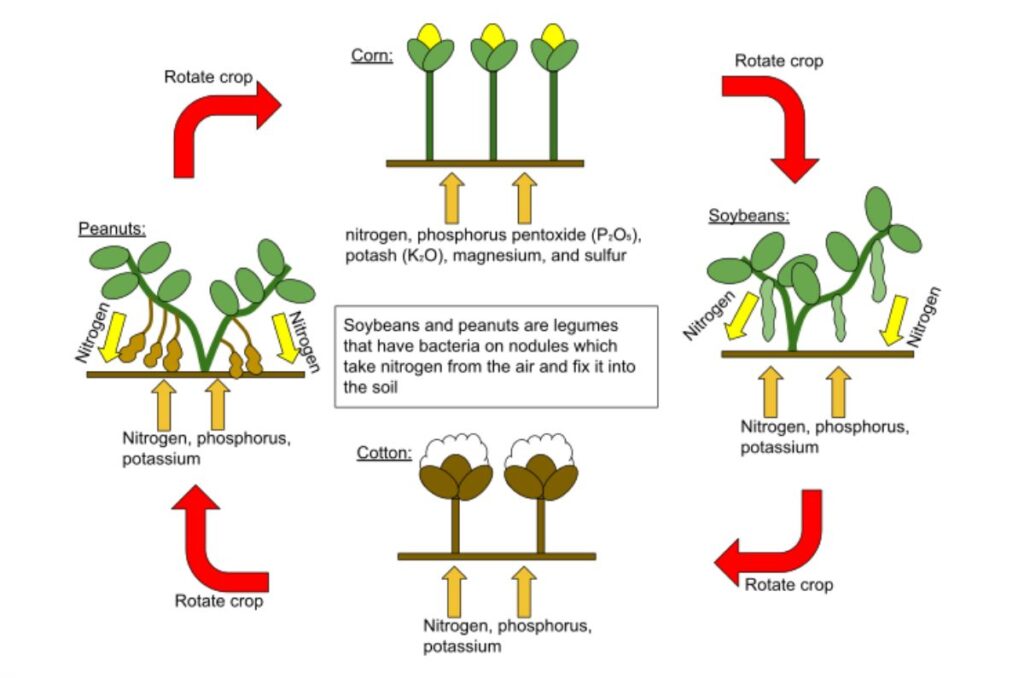
Is Crop Rotation Companion Planting?
Crop rotation is the practice of rotating the planting of your crops every growing season.
Let’s say you have 4 garden beds and 4 crops. You’ll start with one crop in each bed and you’ll switch them up every year. The fifth year is when the same crop comes back to the same bed.
This practice supposedly helps to reduce pest and disease damage.
So you’re not actually growing multiple different crops together. You’re just switching them around.
Therefore, crop rotation is not companion planting.
I can’t really practice crop rotation on a large scale. I only have one spot where I can plant tomatoes because of the sunlight conditions, so that’s where they go every year.
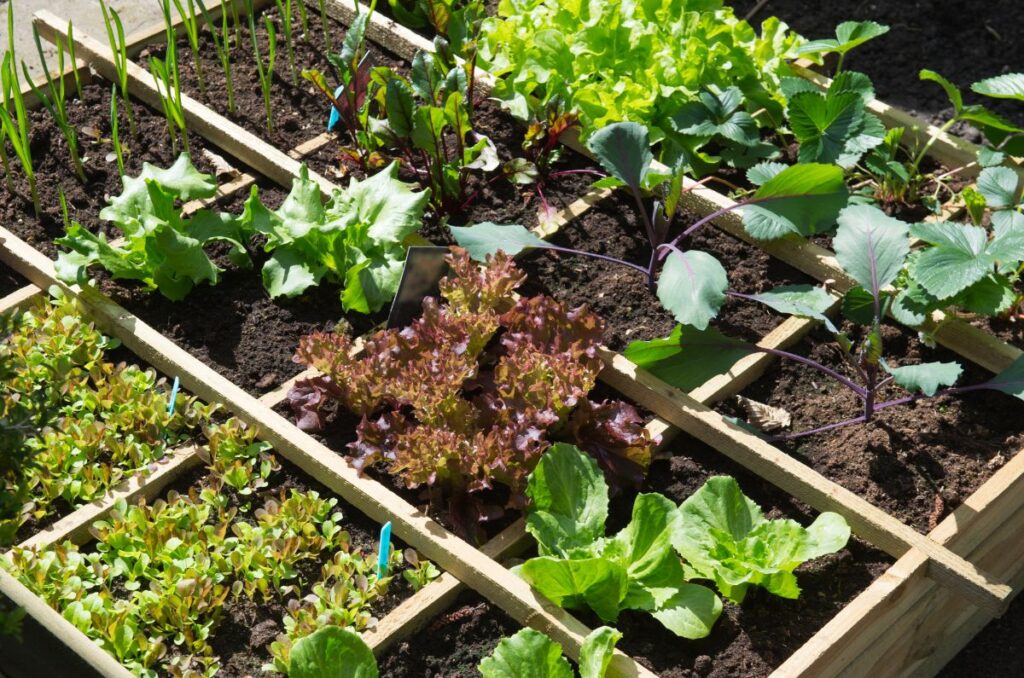
Is Square Foot Gardening Companion Planting?
Square foot gardening is when you divide all your growing areas into square feet. Literally divide them. Most people use drip irrigation tubing to make the square feet visible. It’ll make a grid on your garden beds.
The proponents of this gardening method say that you can fit much more food when you actually space out your plants properly.
The default reference is 1 square foot. It becomes easy to space all the common vegetables because they’re all relative to 1 square foot, they say.
This really isn’t companion planting. Yes, you’re growing a bunch of different plants in one area, but not for the same reason as companion planting.
Square foot gardening is designed to save space, not to reduce pests or something else like that.
It’s more like interplanting than companion planting.
What They Say vs. What Happens
According to all those gardening experts, if you plant X next to Y, you’ll magically repel pests, improve flavour, boost growth, attract butterflies, and fix your marriage.
But that just doesn’t happen in real life. You just throw a bunch of plants in the ground and they grow, because that’s what plants do. They grow.
It’s not possible for you to run a research farm where you’re planting hundreds of rows of beans and marigolds. You’re growing some plants in raised beds, containers, or a small plot.
And guess what: It’s fine.
I know it’s fine because I do it every year.
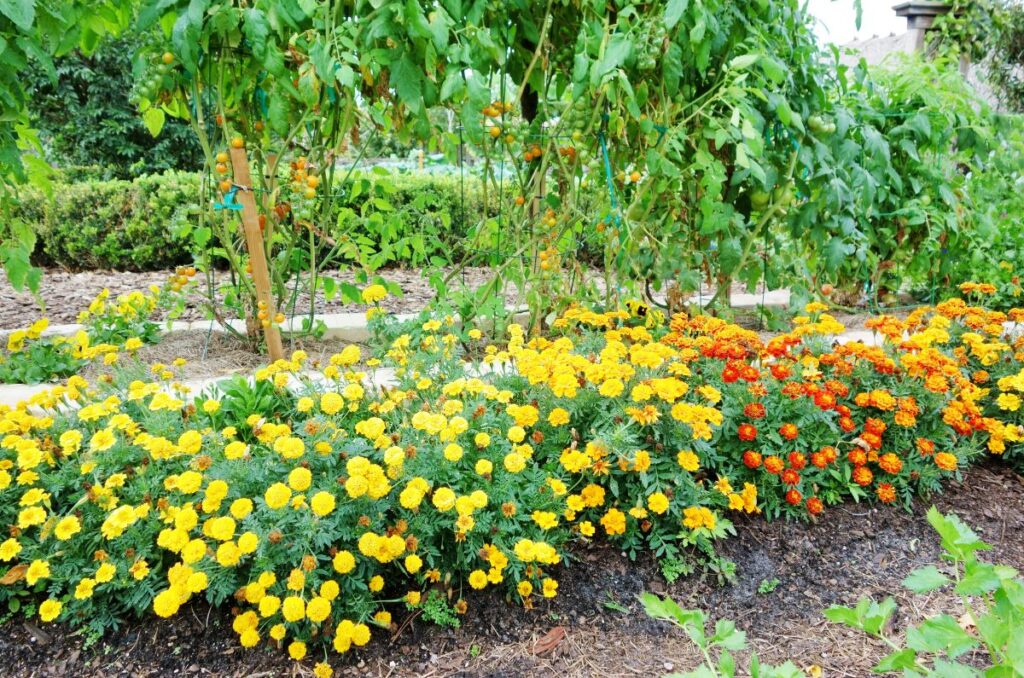
When Companion Planting Kind of Works
Ok, I’m not going to just pretend everything is fake (even though it mostly is). There are a handful of situations where companion planting might help:
- Interplanting flowers to attract pollinators. But even this is just common sense for most gardeners. I mean, how else are they going to get there? And it’s not like you need a specific type of flower.
- Mixing in herbs to confuse plants. Again, it could work, but it’s a hit-or-miss. I’ve never seen that much success from this kind of companion planting.
- Planting something tall for shade. Common sense again. It’s not surprising that a tall plant would shade out a shorter one.
But these aren’t companion planting secrets passed down by expert gardening wizards. It’s just basic plant behaviour. That’s it.
You don’t need a colour-coded spreadsheet to discover this.
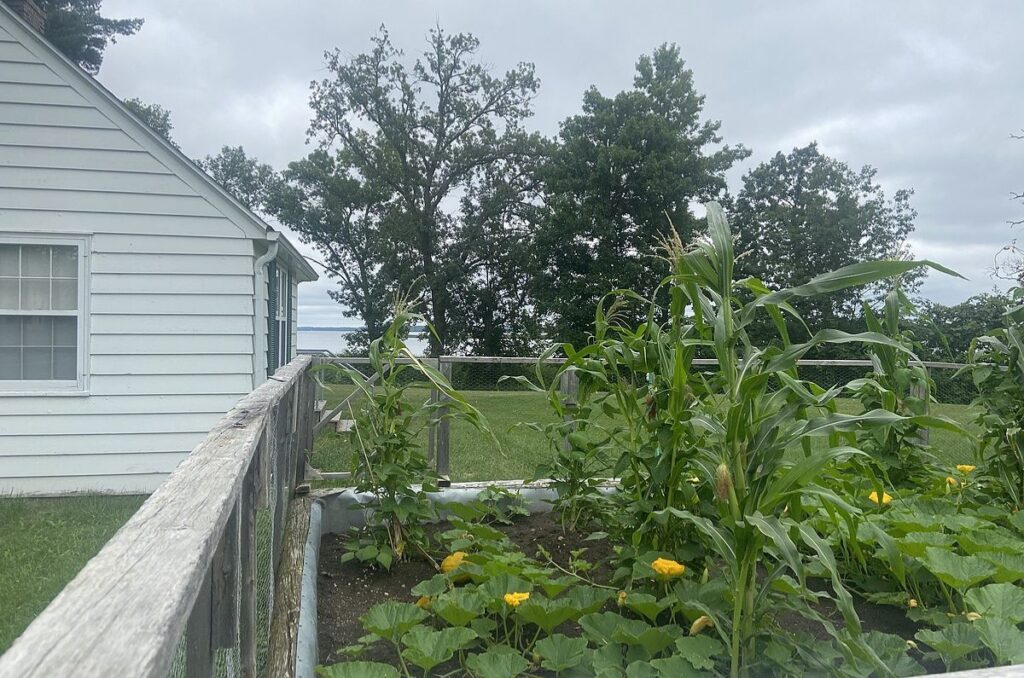
Companion Planting 3 Sisters
“3 sisters” is a term that refers to corn, beans, and squash. They were historically grown by the Indigenous people of North America.
This is another one of the situations where companion planting actually does work. But not for the reasons that you think.
Nobody claims that the 3 sisters reduce pests or boost growth. Or at least they shouldn’t claim that.
It’s done for a couple main purposes:
- Bean Trellis: Corn naturally grows tall because of its central stem. This acts like a stalk that can support climbing bean varieties.
- Mulching: Squash is a trailing plant, meaning it grows along the ground. This creates a living mulch that helps to cool the soil and retain water.
These benefits are not superficial like companion planting benefits, so it’s not like regular companion planting.
This combination of plants has real benefits for a real backyard vegetable garden.
Why Companion Planting Doesn’t Work
Here’s why companion planting just doesn’t work if you’re growing vegetables in your backyard.
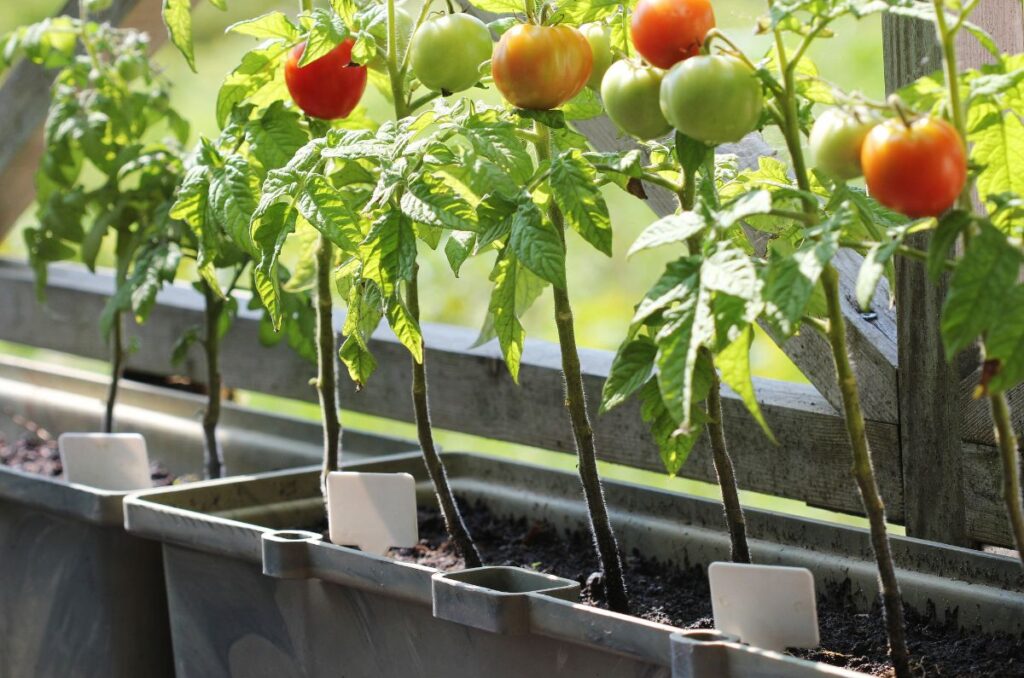
You don’t have enough space for it do anything
There’s no doubt that we don’t have lots of space in our backyards for vegetables. We just don’t. But that’s ok. There are ways around it.
But one of those ways is not companion planting. Those companion planting charts are assuming that you have dozens of plants of each variety.
God knows that most people can’t do that.
If you just have 6 tomato plants and some rosemary, it doesn’t make a difference if they’re growing next to each other. It just doesn’t.
And it would be a problem if it did make a difference. Where would you put them in that case? In your bedroom? Like where would they go?
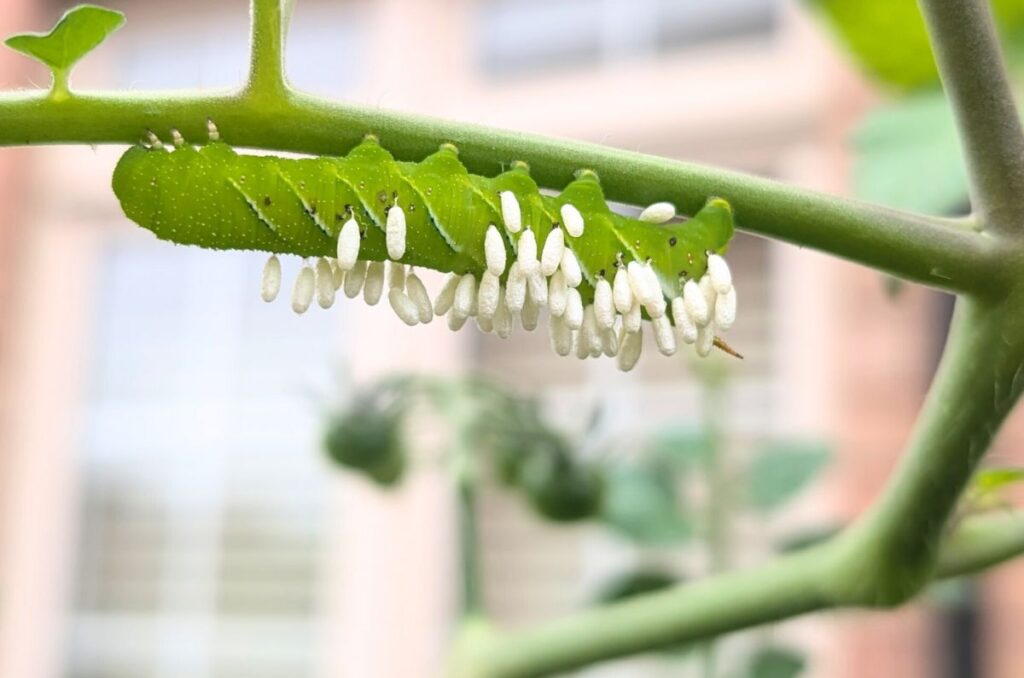
Pests just don’t care
One of the main things that companion planting proponents say is that it helps to deter pests.
Are you serious? It deters pests? Anybody who’s ever been outside in their life knows that that is just not true.
Those aphids and hornworms aren’t out studying your garden. They’ll be there whether you planted garlic or not. And guess what: they don’t care.
If you’ve dealt with pests in any way on your vegetables, you know that they’ll come back. You’ll kill them, sure, but then they’ll come back. You’ll do some weird companion planting combo, but they’ll come back.
That’s just the nature of pests.
For example, some people practice companion planting to deter cabbage moths. The problem is that the cabbages are always going to be there. Those moths will find a way, trust me.
It makes gardening more complicated than it needs to be
Gardening shouldn’t be complicated. Actually, I think it’s fairly simple. But not everybody agrees with me.
Companion planting promoters really just make you start second guessing all of your plantings. “Oh no, I can’t plant onions here cause my beans are already growing.”
Come on. Just stop. Grow your onions; they’ll be fine.
Especially if you don’t have a lot of space like me. Like I said, where are you going to put those plants? I can’t just make space for them.
Most of it’s based on folklore
Most of the companion planting rules and combinations aren’t factual. They’re just rules from someone’s grandma passed down with zero evidence.
I’m saying they’re totally useless, or that you shouldn’t listen to your grandma, but it does mean that I don’t have to recognize them. And neither do you.
And you definitely shouldn’t have to reorganize your entire garden just because of these rules either. That’d be a waste of your precious time.
And I’m also not saying that everything needs to be determined by triple laboratory-analyzed studies. No, I don’t believe that either.
But anybody can make up these rules for whatever reason; why should I pay attention?
Here’s What Actually Matters
Here are my tips for successful “companion planting” in your backyard vegetable garden.
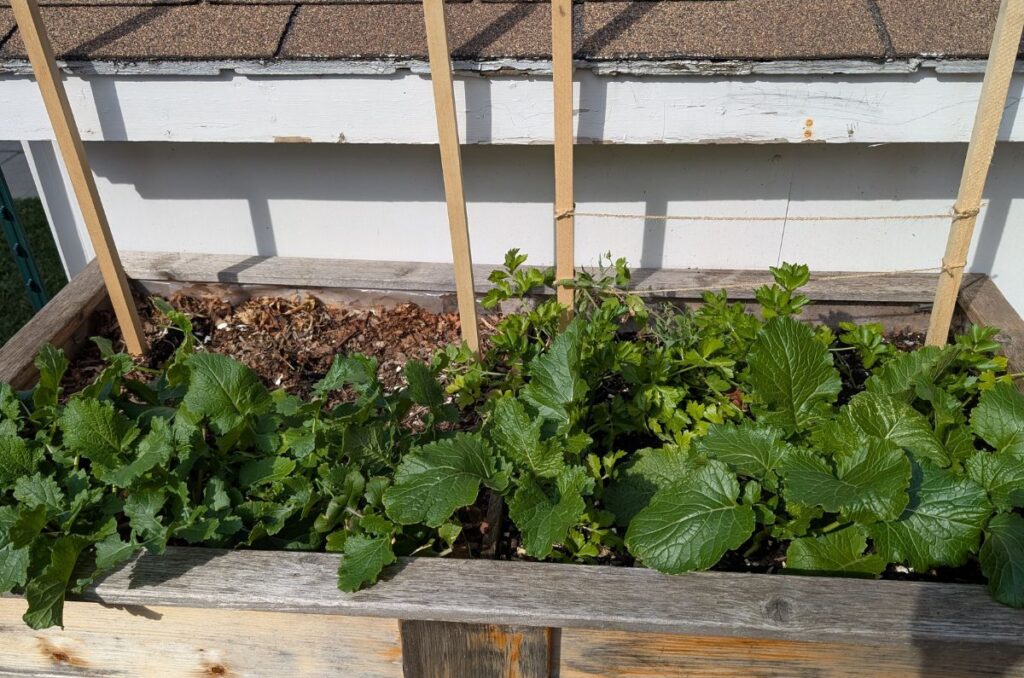
1. Plant what fits
We all know that backyard vegetable gardening doesn’t provide us with much space. I know, I have one as well, and I’m always complaining about the space.
But it gets worse if you try to think of different companion plant combinations that you need to plant. All of a sudden, you’re planting flowers where you need to grow peppers.
I’m not saying that flowers are bad to grow, but come on. If you don’t have the space for flowers, then don’t plant them.
If you don’t have the space for elaborate companion planting ideas, then don’t do it.
Just plant what you can fit. That’s it. Very simple.
If it fits in your space, put it there. Done. Don’t be worrying about those spreadsheets that say everything except practical gardening tips.
Don’t rearrange your entire garden because of what the “experts” say. Just don’t, it’s not worth it with what little space we have.
2. Use your eyes, not a chart
A companion planting chart can’t see your garden, only you can. Even if it could see, it wouldn’t be able to know your garden. Only you can do that.
Look around your garden and see what’s working and what isn’t working.
If one plant is shading another one, remove it or cut it back. It really is that simple. You don’t need to memorize a plant compatibility chart to do that.
Then you will remember, “Ok, peppers grow too tall that they shade out my carrots. Next year I’ll plant my carrots in front of my peppers.” That’s it.
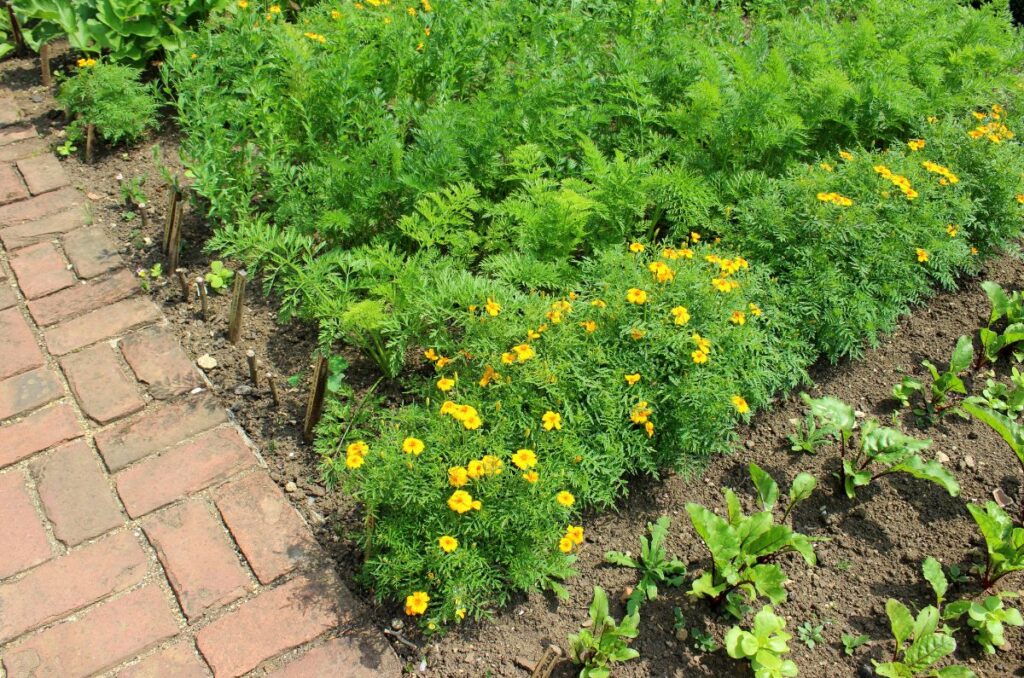
3. Diversity is always better
Farms are made entirely of monocrops, meaning they only grow one crop for hundreds of acres. Obviously this can’t be done in our backyard vegetable gardens.
We want tomatoes, peppers, lettuce, radishes, and so many other crops. And that’s good. Diversity in the garden is good.
The more variety you grow, the healthier your garden tends to be.
It’s not because basil is secretly whispering words of encouragement to your tomatoes. Or because your carrots are somehow supporting your bean roots.
It’s because a diverse garden naturally attracts different beneficial insects. And that’s expected. They have more hiding places, shelter, and food sources.
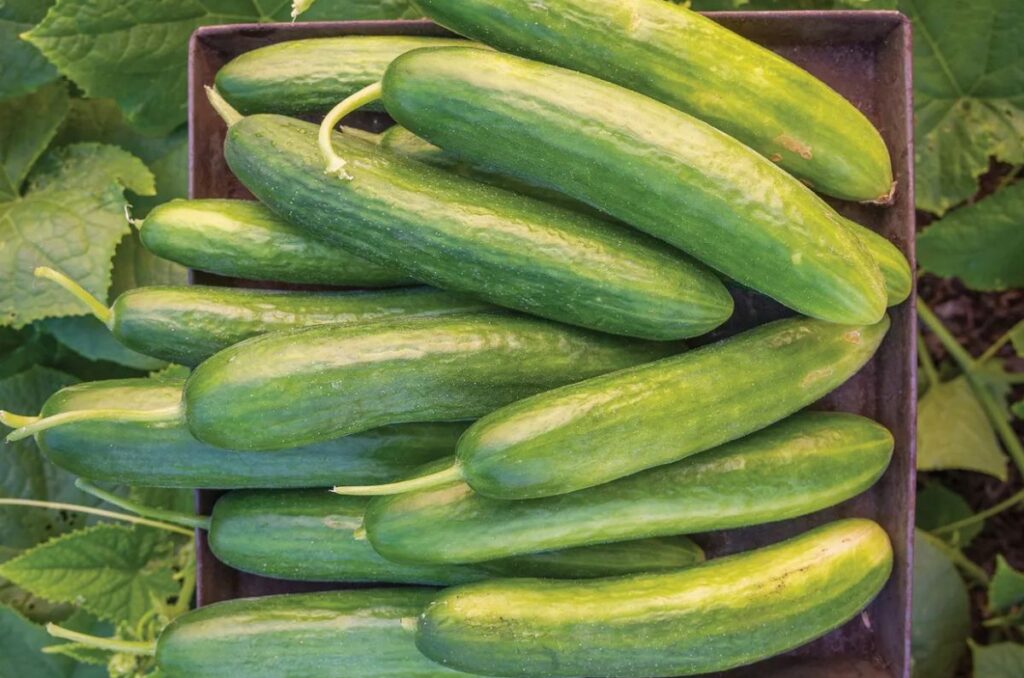
4. Grow what you like
They tell you all these things that you have to grow as the perfect companions for your other plants. But sometimes I just don’t want to grow green onions next to my cucumbers.
Sometimes I just don’t want to grow green onions at all. Sometimes I don’t want to grow marigolds.
And that’s perfectly fine because it doesn’t do anything anyways. I just want to grow some vegetables and that’s it.
They won’t be upset if they don’t see their best friend next to them. They can handle it.
Don’t force yourself to grow any of those plants just because someone told you that they go together perfectly. If you don’t want it, don’t grow it.
Frequently Asked Questions
Permaculture is the practice of developing self-sustaining agricultural ecosystems. By this definition, companion planting would be included in permaculture because you’re growing many different plants together to provide benefits for each of them.
I’m not a huge supporter of proper plant spacing, but most plants should not be planted right next to each other. Some plants, like radishes, lettuce, beets, and spinach, can be grown right next to each other. This is because they’re much smaller plants and they mature quickly.
Despite what those charts say, vegetables and herbs will grow great when planted together.
Again, companion planting itself won’t prevent squash bugs. Do I believe that increasing diversity in your garden will help with this? Yes, absolutely.
Even More Gardening Ideas
Here are a few more posts to get the ball rolling in your garden!
- Best Organic Fertilizer for Lettuce
- How to Use Manure in the Garden
- 5 Vegetables to Grow in Hanging Planters
If you liked this article, make sure to share it with your friends and family members who are also looking to sharpen their gardening skills. Also, consider signing up for our email newsletter; don’t worry, we won’t spam you, just fresh gardening ideas every week!
If you want to learn more about vegetable gardening, make sure to check out what I’m doing on Facebook, YouTube, and Pinterest.
Pin this post for later:
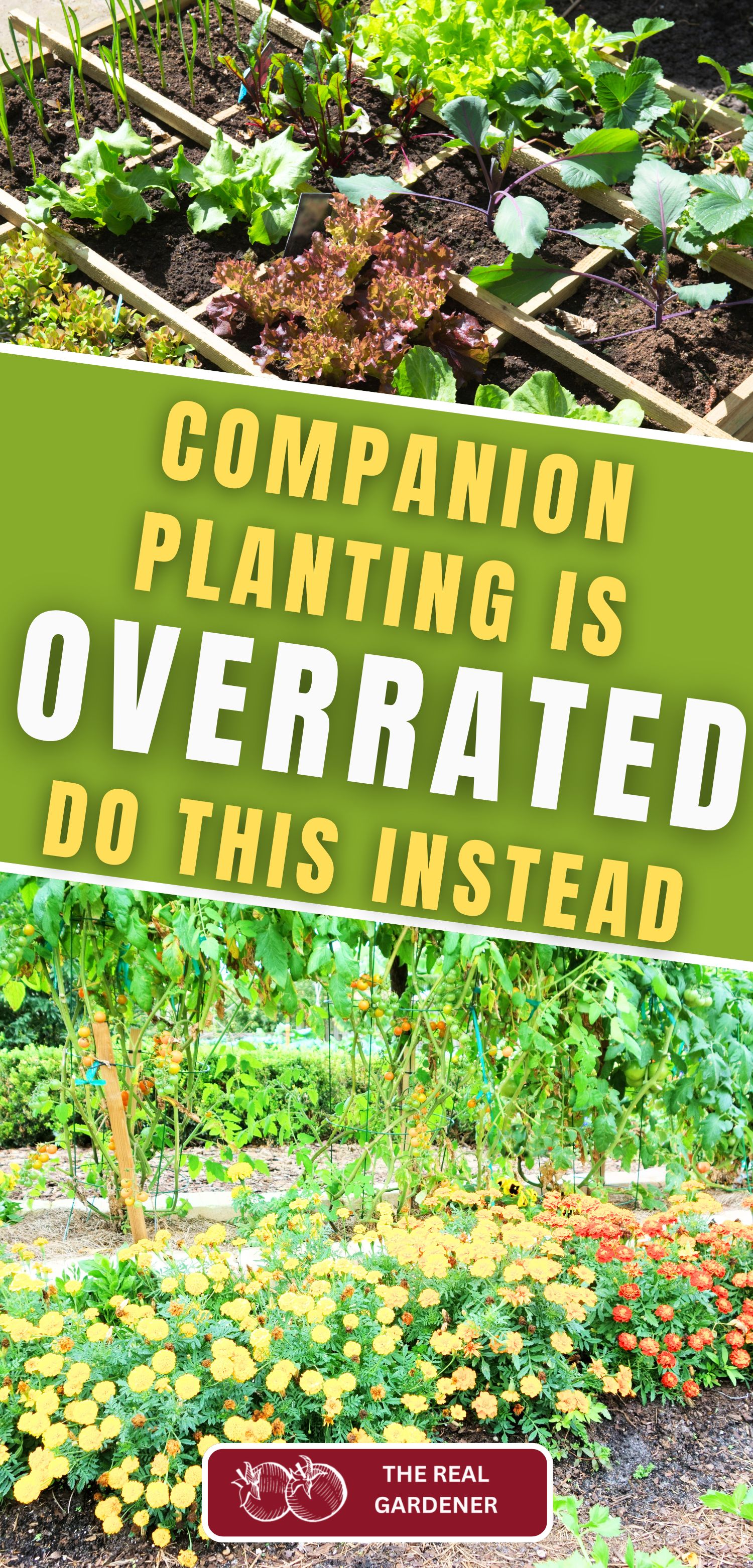
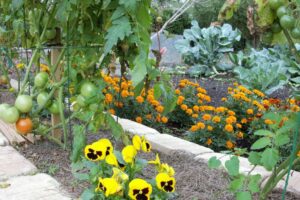
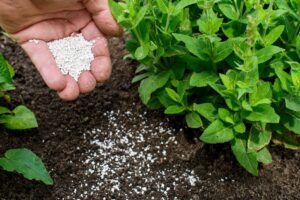
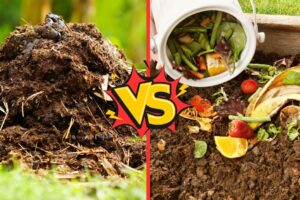
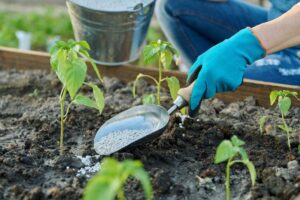
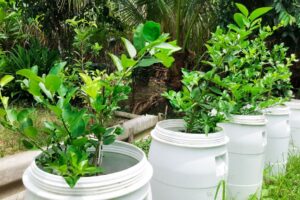


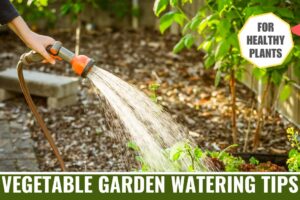
Leave a Reply